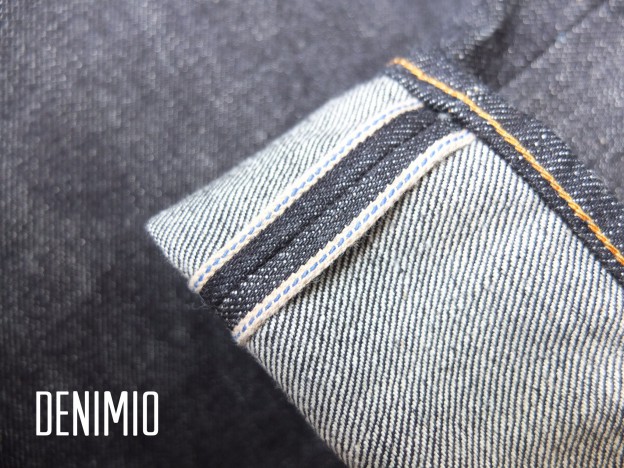Aside from the shrinking, or not shrinking, of the cotton, there are a few other things to consider:
-Lower rise jeans are popular. Pay attention to this. Certain customers like a lower or higher rise, and they pay attention to their rise’s measurement. The lower the rise, the higher the waist measurement will be. Low rise denim is meant to be worn lower on the hip. Look at jeans like the ONI 512 or many pairs in Japan Blue’s lineup for this. (Conversely, look at other pairs by ONI, most of Momotaro’s lineup and also Samurai’s for a mid to high rise and see how that differs in fit).

-Thigh measurement is very, very important to pay attention to. Often premium brands like ONI and Japan Blue have very lean thigh measurements relative to their hem and waist measurements. It is said to “size by the thighs.” Brands like this are the perfect reason. Pay attention to the measurements before and after soak on the website and see how they vary. Diehard denimheads often “size up” to accommodate for their thighs that are too tight, while having a big waist, in pairs like the the ONI 512:

-Inseam measurements are very important. While a 34” or 36” inseam is more than enough for most of us—with a cuff—some of us look for a 39” inseam or above. In the brands we carry, that is most often seen in Samurai and SDA. Rawr Denim wrote a fantastic article on different inseam lengths that accommodate taller individuals here:
http://www.rawrdenim.com/2013/05/10-pairs-of-raw-denim-with-34-inseams/
-Hardware. Some brands love to use copper or steel hardware. All the brands we carry use different hardware for different reasons. Look at the different rivets of our brands — strong, colorful, unique — every brand has something new to offer. Every brand from Denime to Eternal to PBJ to Samurai; each and every brand we carry has a unique approach on hardware and we appreciate them all equally. Each approach to hardware is equally artistic and beautiful. A great example of hardware would be our recent collaboration with Momotaro. There’s even some indigo bleed in this shot, more on that in just a second!

-Indigo bleed. Yes, indigo will bleed onto your things. Onto your car seat, shoes/boots, couches. That is part of the beauty of this, part of the journey. People who buy these pants know this. Embrace it!
-Weight. The old school dungarees worn by miners were around 10oz. but they were worn over other things. A conventional pair of quality, Japanese denim is usually around 13-15oz. This would include your basic, entry level pairs and some of the highest pairs of Japanese denim, as well. Often, among denim fans, a very heavy weight is thought of as being the highest indicator of quality. And while, yes, it takes more sophisticated machinery to produce it, it does not necessarily mean that it is better or worse than other denim. Some of the nicest denim we carry is below 14oz. and is manufactured unlike anything else on earth, with hardware and details that have to befell and seen to be truly beheld. We offer jeans sold at 10oz, just like the miners, as that is a great weight for summer. We in this business get so used to heavy weight denim all the time we often forget the importance of a solid pair of lightweight denim, though this weight was often the norm.
Heavyweight denim is usually thought of as being more robust due to weight, but that is not always the case. A heavy weight pair is not an insurance policy, though a heavy pair usually does mean a more robust construction. A heavier pair also usually means more friction, more creasing. This means a higher level of indigo to lose, as well. Often denimheads purchase heavier weight denim to obtain the highest level of fades, with the most striking levels of contrast in the whiskers (the “top block,” or the front top, from the crotch to waistline), the “honeycombs,” or the creases that form in the area behind the knees as one walks and moves, the top block going down the knees, and the stacks, if present. “Stacks” are when a pair of denim actually stacks on top of a pair or shoes or boots and forms a diamond sort of pattern, creasing atop the footwear. Here’s a good illustration of weight, brought to you by the encyclopedic denimheads at Rawr Denim:
We’re still only scratching the surface. There’s still so much more to share, so stick around, friends!


